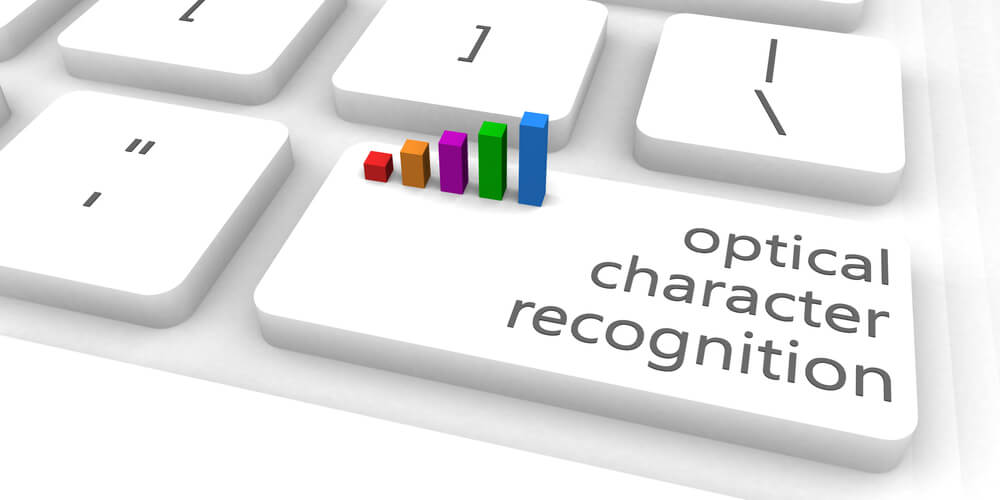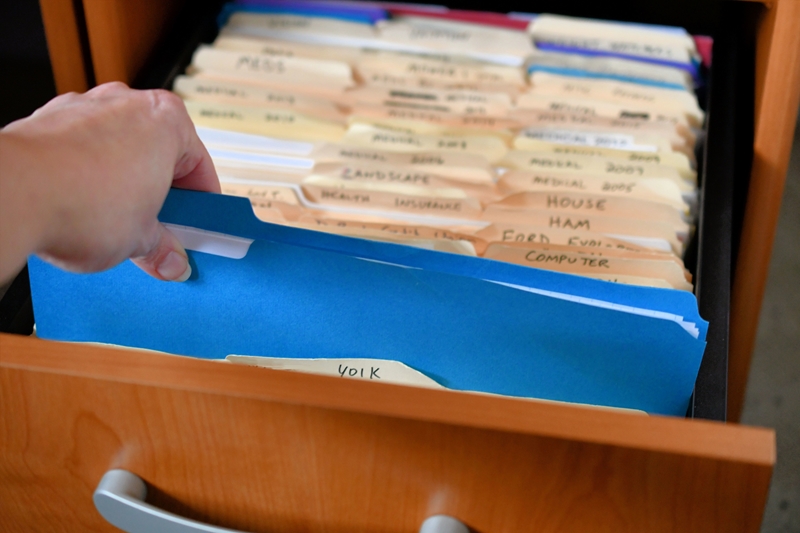
Whatever sector you’re in, when data entry is involved the same concerns crop up time and time again.
You want to reduce the time it takes to enter data while simultaneously minimising errors. You want the information to be more widely available, but ensure the proper security measures are taken. So, where do you turn?
Optical Character Recognition (OCR) is a widely used and highly efficient method of data entry. In this article, we’ll examine what OCR is, the benefits it holds and how you can integrate OCR data entry into a more holistic solution.

What is OCR?
OCR allows users to convert images of printed or typed words into machine-encoded text that can be digitally edited and searched. Common subjects for OCR scanning are invoices, receipts and PDF contracts, though its uses are wide-ranging and include everything from digitising historic documents to registration plate recognition.
All a traditional scanner can do is create what’s called a raster image, which is made up of either coloured or black and white dots. However, this is simply a screenshot, not something a computer can understand, and therefore not something humans can manipulate for data entry and extraction purposes. To achieve this, OCR involves a three-stage process:
- Pre-processing – To help ensure an accurate conversion, the software will use a number of methods to prepare it for processing
- Conversion – There are two algorithms OCR software may use to convert images – Feature Extraction and Matrix Matching. While they’re very similar, the former is generally used on lower quality documents
- Post-processing – This is a final step aimed at making the conversion as accurate as possible
OCR vs. OMR
Optical mark recognition (OMR) is another mechanism of getting paper based information into an electronic format. However, while this may sound a lot like OCR, there’s a key difference between the two.
OMR can only go as far as establishing whether or not a specific area of the paper contains marks – while OCR technology can identify what that mark is. As a result, OMR has much more limited use compared to OCR – with a common function being grading multiple choice exams papers.
What are the benefits of OCR for data entry?
1. High levels of accuracy
By automating the process of data entry, OCR vastly reduces the capacity for human error to result in inaccurate data entry. This is a major bug bear for many organisations, and OCR offers a reliable solution.
2. Increased efficiency
OCR scanning is a fast process, however the real efficiency boost comes when personnel want to search and extract data. Because computers can interpret OCR scanned documents, a normal keyword search function can be employed to quickly retrieve desired information.
3. A paperless approach
As OCR allows you to catalogue and store data in a digital format, you no longer need paper copies. Not only does this mean you can do away with many of your space consuming filing cabinets, you’re also making the office more environmentally sustainable.
OCR allows users to convert images of printed or typed words into machine-encoded text that can be digitally edited and searched
4. More secure data
Organisations today have to be more careful than ever in handling data, especially when it pertains to customers. Digitally stored documents can be password protected, with access limited to only those who really need it.
5. Reduced costs
Businesses who invest in their own OCR software will no longer need to hire external professionals to do data extraction for them. On top of this saving, the ability to digitally store and transfer documents also reduces expenditure around printing, copying and freight.

Digitisation vs. digitalisation: Where OCR fits in
OCR is as an example of digitisation – the process of converting a physical asset into something digital. However, it can also be part of a wider scale digital transformation in your organisation. Digital transformation, or digitalisation, is the act of changing an entire business model by embracing new technologies to streamline processes and offer a better value proposition to customers.
While OCR scanning, like many digitisation processes, may seem like a relatively small step in your digital transformation, by converting your data into an electronic format, you’re taking a firm step towards a paperless office while removing an inefficient legacy system and repurposing it for the modern age.
Example 1: Healthcare facilities
Traditionally, this has been a sector overflowing with paper forms on everything from patient histories to health insurance policies. Often, multiple parties across different sites need access to this information, however there’s also a clear onus on medical staff to keep patient information confidential and protected at all times.
OCR is as an example of digitisation – the process of converting a physical asset into something digital
OCR allows facilities to retain all patient records in one unified, searchable location that can be accessed only by those with the correct clearance. This speeds up extraction, and helps to ensure that patient information is always up-to-date and accurate, allowing treatment staff to perform their duties without unnecessary holdups.
Example 2: Professional services businesses
While security, accuracy and speed are of clear importance to professional services businesses, having editable electronic documents is a really important benefit that OCR brings to the table.
Using OCR, compliance forms, legal documents and HR paperwork can be stored as editable PDFs meaning that you can update them as contracts progress. What’s more, your team can find this information by simply typing in a few keywords.
Getting the best results
These are just two examples of where OCR can help businesses streamline their data entry and extraction processes. If you’re interested in how you can apply OCR in your organisation, get in touch with the team at Brother today.





